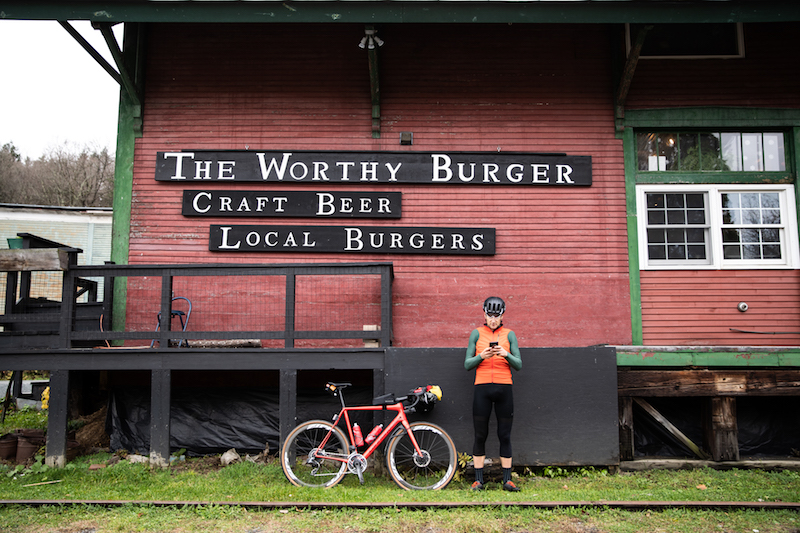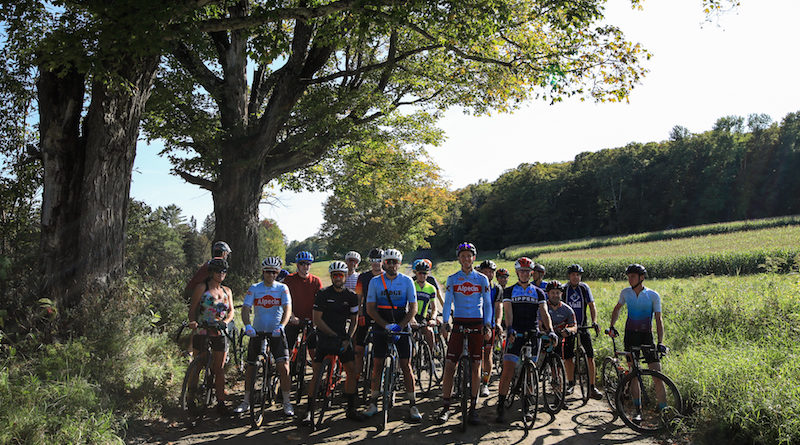The State of Gravel
Of Mullet Protocol, Garden Gnomes and Gravel Rides
Can Vermont’s gravel riding scene keep its grassroots, down-home, for-the-masses appeal? Pro Riders Ian Boswell and Ted King discuss.
Gravel riding has been going on as long as there have been dirt roads in Vermont. And with more than 8,000 miles of unpaved roads (versus 6,000 paved), there’s a reason why the Green Mountain state has become a gravel Mecca of sorts.
From the Deerfield Dirt Road Randonée (D2R2), which started casually sending scrappy pelotons through the backroads and hills of northwestern Massachusetts and southern Vermont in the 1990s to Rasputitsa, the Northeast Kingdom’s April sufferfest (and with a limit of 1,500 riders, now the state’s largest bike event), gravel riding events are blossoming around the state.
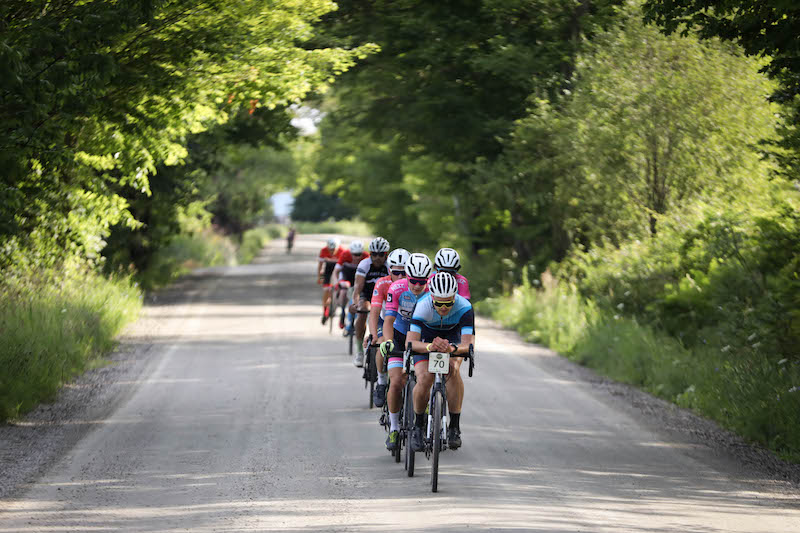
Not only are these events growing (many, including Rasputitsa and the Overland Grand Prix sell out by March), but they are also attracting world-class competitors. Mountain bike legends Tinker Juarez and Ned Overend have raced in the Overland Grand Prix, a ride-it-if-you-can route through the backwoods “pavé” of central Vermont.
Rasputitsa has drawn such pros as Vermont’s Olympic mountain bike racer Lea Davison and former UCI pro rider Alison Tetrick, who hails from California.
But that’s not to say they are just for pros: Rasputitsa’s biggest prize remains the “Lanterne Rouge,” which goes to the last rider to finish.
And a number of cyclists who have come for the races, have stayed for the gravel. “We’ve had people move here and buy homes after racing Rasputitsa,” notes Heidi Meyers, who with Tony Moccia founded the event in 2013.
In the past couple of years, two former pro racers and Tour de France veterans moved to Vermont and launched their own gravel events. (A third former pro, Tyler Wren, has started the Farm to Fork Fondo road rides and fitness events).
In 2017, Ian Boswell, who raced for Team Sky and Katusha-Alpecin (among others) in the Tour de France, decamped from Nice, France, where he was living, to the tiny town of Peacham, Vt., with his now-wife Gretchen. A year later, he started the Peacham Fall Fondo, a 50-mile gravel ride that yes, attracted a number of former pros, but also galvanized the small town, with community members serving up home-made apple pies outside the Peacham Library. For 2020, Boswell has moved from road racing to join the Wahoo Fitness gravel team and he’s slated the Peacham Fall Fondo for Sept. 26.
Another Tour de France race veteran, pro Ted King and his wife Laura (neé Spencer) moved to Richmond, Vt., in the summer of 2018. Ted, as Boswell puts it, is the “king of gravel,”
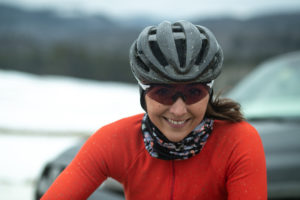
having twice won the grueling, 200-mile Dirty Kanza race in Kansas as well as gravel rides from California to Iceland. Laura King is also an accomplished cyclist who has ranked up podium finishes as a triathlete, road rider and mountain biker. In 2019, the couple launched Rooted Vermont, a 45- to 85-mile ride through central Vermont. They expect their first child in March and the ride, now sold out, is slated for Aug., 2, out of Cochran’s Ski Area in Richmond.
In February, Ian Boswell invited King, his buddy and former competitor on the European pro tour, as his first guest on his podcast “Breakfast with Boz,” sponsored by Wahoo Fitness.
Here are some highlights from their conversation. For the full podcast see, wahoofitness.com.
IAN: Ted, you do so much more in gravel beyond just race. You are part of these different groups that are looking at the future of gravel and what that looks like. Let’s go back to the beginning, though, when you ended your road career. Did you intend to race gravel? Did you think you would go this direction?
TED: To answer the question: no. I retired from bike racing in 2015 and started partnering with some brands to just put more people on bikes and make people happier riding with better equipment. And that just happened to coincide with the continued booming state of gravel.
IAN: Growing up in New England, did you ride gravel?
TED: I grew up in small-town New Hampshire, chasing my brother around and riding a mile or two to school or to the local convenience store to get candy. Riding a bike was just a way of life. It wasn’t until college that I got back into cycling again through my brother, who was a successful collegiate racer. I went to Middlebury College and there are tremendous unpaved roads around there. I can picture one particular gravel road that I would ride from 2001 through 2005. At the time I was riding 21c to 23c tires and had a 23-tooth cassette and it just wasn’t conducive to gravel. We sort of joke that, yeah, we’ve been riding gravel forever and now we’re just all of a sudden calling it gravel. But to answer the question, I started mountain biking in college, then road riding, so it’s really only recently that I’ve jumped headlong into gravel.
Above: 1. Ted King, two-time winner of the mother of all gravel rides, the 200-mile Dirty Kanza. 2. Laura King, a competitive cyclist and triathlete, out on a training ride. Photos by Ansel Dickey
IAN: Yeah, well I remember my first gravel ride. I was with cyclists Ryan Trebon and Barry Wicks in Bend, Ore., and they took me on these trails. I was on Team Sky at the time and riding my Pinarello with tires at 120 psi and thought ‘this totally sucks.’ I was getting rattled all over the place. Bikes have come a long way. But tell me, what were those early days of gravel riding like? What was the vibe at the races?
For more about how gravel gear has evolved (and the latest innovative bikes, pedals and more, see “Your Guide to the Best New Gravel Gear.”
TED: It’s something of a hackneyed term but the “community” that was at my first Dirty Kanza was something that has absolutely struck and stayed with me. And that is a big reason that I was super excited to go back the subsequent year and every year since then. It’s the gravel community at all the events that is the thing that I’m excited about. Yes, I’m competitive and I like to do well but if you have a flat in the middle of a 200-mile gravel race, you can still go out and have an awesome day and embrace the community you are going to be with in the middle and end of the race.
IAN: From my perspective, being very new to this, I would normally be gearing up for my first race of the season, you know, this weekend. And I’ve kind of come with this mentality like ‘oh this gravel thing is awesome like you don’t have to ride as much, and you have a lot more free time.’ But because of social media I’ve been tracking other people, and I’ve noticed that this [sport] has become very serious.
TED: It’s crazy, to be honest, and I think you know it’s growing like wildfire, but “the gravel season”—as much as I balk and sort of laugh at that expression—has become a thing and it is hyper-competitive. That sort of gnaws at me and it makes me a little bit anxious, to see it go that direction. Certainly 2016 gravel was not what it is now.
But I see glimmers of hope and it’s like, not all events are meant to be hyper-competitive. There are approximately 700 gravel events over the course of the year here in America. They’re not all competitive and not all of them have a big paycheck at the finish line or a belt buckle that people are vying for.
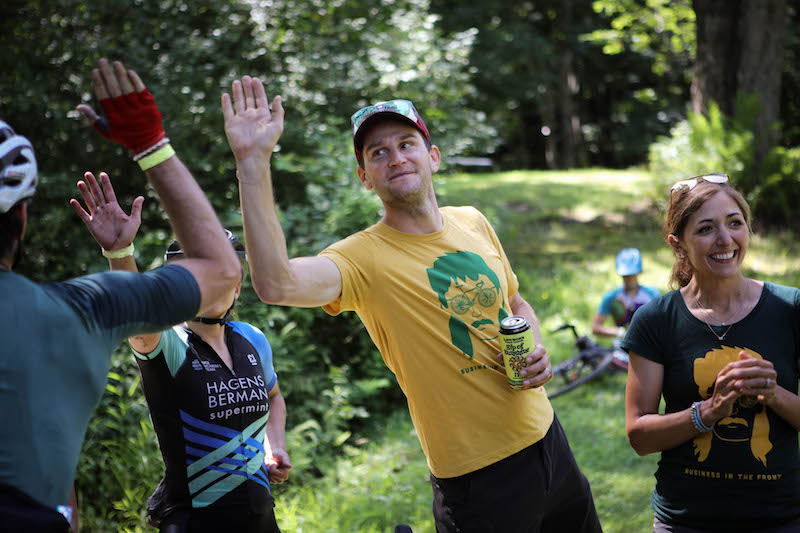
IAN: The UCI just mentioned that they’re wanting to start a gravel Worlds. What’s your take on that? Is it frightening to you or is it exciting that more people are getting into it?
TED: It’s certainly a hint of both. I think ultimately if more people are on bikes, the world is a better place from a health standpoint, from a human physiology standpoint, from a stress standpoint, from a traffic standpoint. We could solve a lot of the world’s ailments if everybody rode a bike and the world would be a more patient place. We live in an enormous country where roads are big and cars are fast. We don’t live in a downtown society, much like a small-town European culture does, where anybody can ride two miles and go to the market. So, this, this groundswell of support that is happening culturally in America, everywhere the gravel is, is bringing people to cycling that would otherwise never ride a bike. They would never jump into cycling and be a Cat Five racer, and they’re never going to get into recreational cycling, but all of a sudden gravel is appealing because you are going off roads, and it is less dangerous and you’re getting away from cars. If that is going to ingratiate people to the bike, I think that is an excellent thing.
IAN: I was asked the question the other day if gravel riding would save U.S. cycling. And my response was yes because it’s not a high level of entry to the sport and it’s not intimidating like, you know, road racing. In a lot of ways I think it could save American cycling.
TED: Time will tell. There’s a fear that the growth in hyper-competitivity is going to steer gravel racing in the direction that road racing has gone and mountain biking. Mountain biking boomed and then came heavily crashing down. There’s a lot of people who are saying like we don’t want that to happen. We don’t want that to happen and I totally agree we don’t want to see gravel fall apart. Why did road racing die? Why did mountain bike racing fail? And how can we take those explicit examples and say we are not going to do this in gravel? And how do we eliminate the negative things and strive to make the positive, all the better. I don’t have the answer to those things, but I think it takes a little bit of conscious thought and forward-thinking to try out the right things about this sport and make it all the better. It’s a lot of trial and error.
IAN: Well, you and your wife Laura organized Rooted Vermont, which is Aug. 2. What are you guys looking to do or change or implement at Rooted in order to kind of, you know, make your vision of what gravel should be happen?
TED: We recently moved to Vermont and immediately the people who lived here
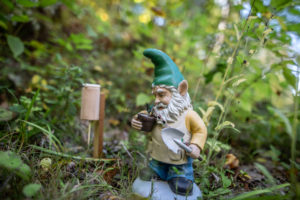
independent of the bike community were amazing. They, like, came to our house to help us move in. It was phenomenal. The community here in Vermont is what we really didn’t have in other places that we’ve been—not to say it doesn’t exist. The cycling community is something that has been fabulous and instrumental throughout our lives, so it was a matter of introducing the cycling community to our community here in Vermont.
IAN: And the “Mullet Protocol?”
TED: The concept of Mullet Protocol, “business up front, party in the back,” is a priority and we put it all over our event t shirts. It says “this event is for the masses.”
What was cool at Rooted was there was literally a natural migration to the finish line last year when our last rider finished. The party that happened with the very last rider was as awesome as when the first rider crossed.
IAN: Yeah, that’s what we want to do too. At the Peacham Fall Fondo we actually hid all these little gnomes with rakes around the course. It was an attempt to try and slow people down, because if you’re going fast, you’re not going to see them. There was a prize then for people who found the rake, so it was a unique way of trying to slow people down. So, yeah, we’ll call that the Gnome Protocol.
TED: That’s one of the most creative things that I’ve ever heard! It’s hard to get people to slow down because it’s human nature to want to compete. So, whether your event is two people or 2000, one person is going to win the race. But then you really want to celebrate and embrace everybody else who is part of the day, whatever the event is.
IAN: Are these big gravel events like road racing, with people racing hard from the beginning, or is it more like a “hey let’s cruise?”
TED: What I really love about gravel, and I have a greater appreciation for now having done so many events, is when you find yourself in the lead group or whatever group and you start to be civil and talk to the riders around you. I did The Muddy Onion last March and the weather was garbage. We got diverted off course. There were four of us. One person had to go to the bathroom—me. My friend Ansel Dickey’s saddle was slipping so he wanted to fix that, and we had two other people in tow. So, as a group we said, ‘Okay guys, let’s stop. I’m going to take a pee and we’re gonna fix the saddle, let’s figure out where the heck we’re going, and we’ll go from there,’ instead of the element of negative road racing where you’re trying to dupe the other person and figure out a way to win the race. Certainly, as we are all inherently competitive, that is something that’s going to happen, but at the end of the day, the goal is to have fun. The goal is to get a little workout in. The goal is to finish and still be in good spirits.
For more great gravel rides happening across Vermont this season, see “Fresh Dirt: 7 New Gravel Rides We Love.”
